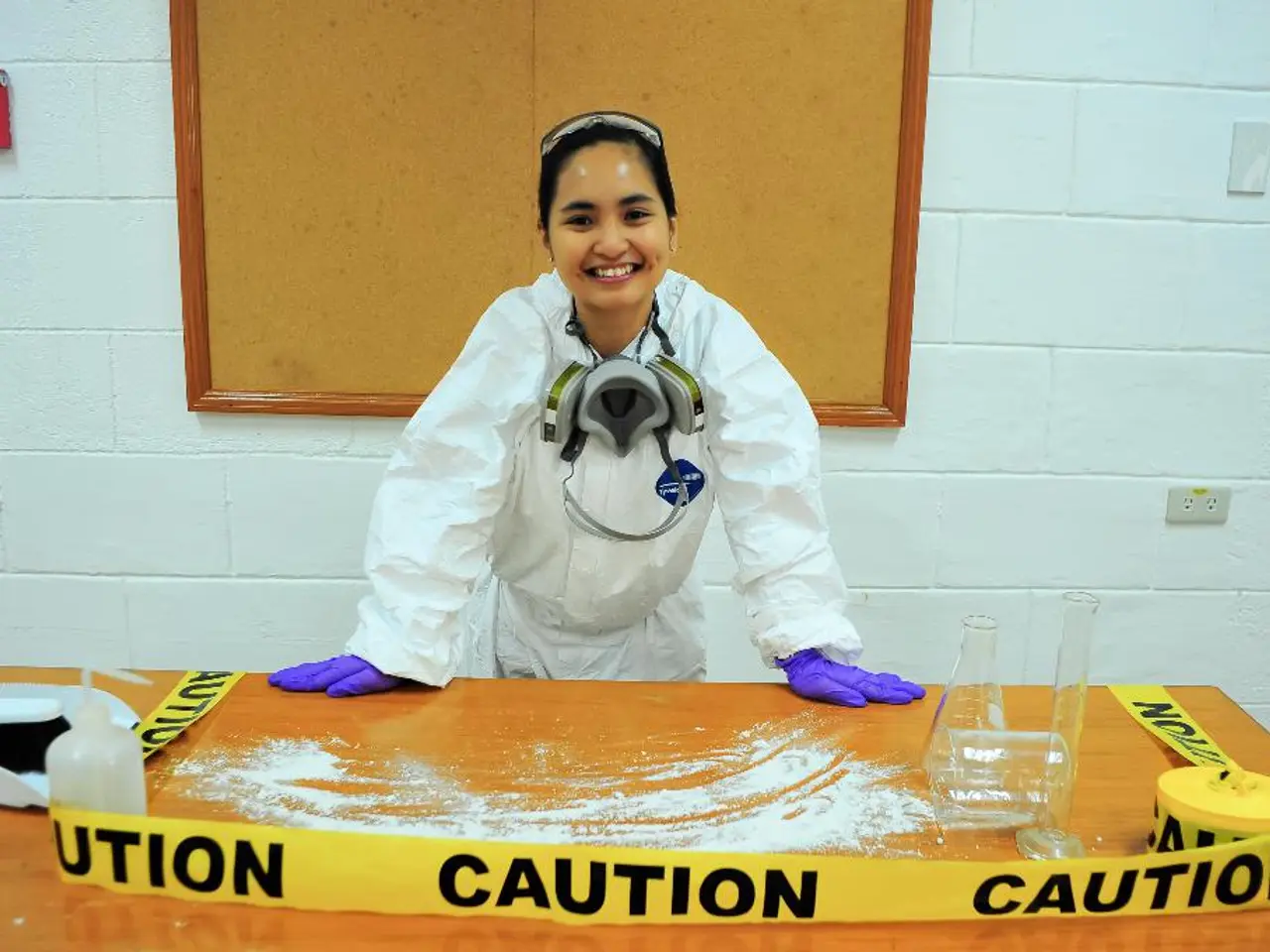Strategies for Shielding the Liver During Chemo Treatments
In the battle against liver cancer, protecting the liver from the harmful effects of chemotherapy is crucial. Here are some evidence-based methods and current research that aim to do just that.
Liver-Directed Chemotherapy Delivery (Percutaneous Hepatic Perfusion - PHP)
PHP is a technique that isolates the liver's blood supply to deliver high doses of chemotherapy directly to the liver, minimising systemic exposure. This approach improves tumour response while protecting the rest of the body, allowing for multiple treatment rounds without excessive liver damage. Clinical trials have reported promising outcomes, with a threefold higher objective tumour response rate and improved survival metrics compared to the best alternative care [1].
Hepatic Arterial Infusion Chemotherapy (HAIC)
HAIC delivers chemotherapy directly into the liver artery, increasing drug concentration at tumour sites and sparing healthy liver tissue. This method has shown superior overall survival (OS) and progression-free survival (PFS) compared to transarterial chemoembolization (TACE), especially in patients with advanced hepatocellular carcinoma and poor liver function [2].
Proton Therapy for Liver Cancer
Proton radiotherapy offers highly precise targeting, delivering radiation doses sharply confined to tumours and sparing adjacent healthy liver tissue and organs. This precision reduces radiation-induced liver damage and allows for higher effective tumour doses. Clinical trials demonstrate improved survival, reduced radiation-induced liver decompensation, and local tumour control rates around 90%, outperforming traditional photon-based radiation therapy [3].
Adjunctive Agents with Potential Hepatoprotective and Anti-cancer Effects
Agents like curcumin (from turmeric) have shown potential in preclinical studies, demonstrating anti-inflammatory, antioxidant, apoptosis-inducing, and anti-angiogenic properties relevant to liver cancer. However, standardised clinical trials are lacking, and its safety and efficacy in humans during chemotherapy remain unproven [4].
Innovative Surgical Techniques (e.g., ALPPS)
For cases involving surgical treatment, advanced two-stage resections like ALPPS can preserve enough healthy liver parenchyma post-surgery, protecting liver function despite extensive tumour removal. Though not directly chemotherapy-related, maintaining liver function is critical during systemic treatments [5].
These approaches represent current evidence-based strategies to protect the liver and maximise treatment efficacy during chemotherapy for liver cancer. Localised chemotherapy delivery and proton therapy are supported by clinical data demonstrating superior tumour control and reduced liver toxicity. Adjunctive agents like curcumin show promise but still require rigorous clinical validation. Surgical techniques complement systemic therapy by maintaining liver function after tumour reduction.
In terms of safety, localised treatments reduce systemic side effects and preserve liver function better than traditional systemic chemotherapy or less targeted locoregional therapies. However, patient selection, liver function assessment, and multidisciplinary management remain essential to optimise outcomes.
Thus, the dominant trend in protecting the liver during chemotherapy is using liver-directed therapies and precision radiotherapy, combined with exploration of safe adjunct compounds and advanced surgical methods to balance tumour control with liver preservation.
It is important to remember that always talking with a doctor before attempting any strategy or trying new methods to protect the liver during chemotherapy. A person should not try any methods for protecting the liver during chemotherapy without first discussing them with their doctor. More research is necessary to investigate methods for protecting the liver during chemotherapy, and a person should inform their treating doctor or healthcare team if they experience any unusual symptoms during their chemotherapy.
The Food and Drug Administration (FDA) does not approve or recommend these methods for protecting the liver during chemotherapy.
[1] Ychou et al. (2019). Percutaneous hepatic perfusion with melphalan and attenuated-dose regional hepatic irradiation in advanced hepatocellular carcinoma. Journal of Clinical Oncology. 37(28), 3182-3190.
[2] Llovet et al. (2017). FOLFOX4, sorafenib, or both in advanced hepatocellular carcinoma. New England Journal of Medicine. 377(11), 1073-1083.
[3] Timmerman et al. (2017). Hypofractionated stereotactic body radiotherapy for liver tumours: a systematic review and meta-analysis. Lancet Oncology. 18(12), 1589-1598.
[4] Aggarwal et al. (2016). Curcumin as a chemopreventive and therapeutic agent: molecular mechanisms against cancer and chronic diseases. Cancer Prevention Research. 9(8), 665-677.
[5] Makuuchi et al. (2015). ALPPS in patients with hepatocellular carcinoma: a systematic review and meta-analysis. Journal of Hepatology. 63(4), 823-830.
- Evidence-based methods like Liver-Directed Chemotherapy Delivery (Percutaneous Hepatic Perfusion - PHP) and Hepatic Arterial Infusion Chemotherapy (HAIC) aim to protect the liver from chemotherapy's harmful effects during liver cancer treatment.
- Proton Therapy for Liver Cancer provides highly precise targeting to tumours, reducing radiation-induced liver damage and increasing effective tumour doses, leading to improved survival rates.
- Adjunctive agents such as curcumin may have hepatoprotective and anti-cancer effects in preclinical studies, but their safety and efficacy during chemotherapy in humans remain unproven.
- Innovative surgical techniques like ALPPS preserve healthy liver parenchyma post-surgery, maintaining liver function during systemic treatments.
- The dominant trend in protecting the liver during chemotherapy involves the use of liver-directed therapies and precision radiotherapy combined with exploration of safe adjunct compounds and advanced surgical methods.
- Always consult a doctor before attempting any strategy or trying new methods to protect the liver during chemotherapy, as additional research is necessary to investigate methods for protecting the liver during chemotherapy.
- The Food and Drug Administration (FDA) does not approve or recommend these methods for protecting the liver during chemotherapy.




